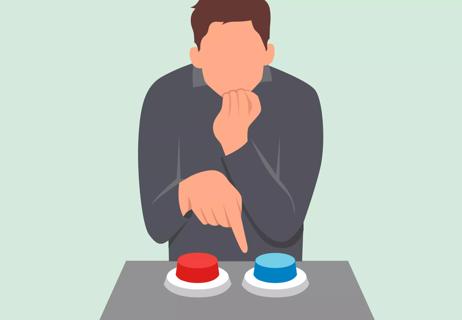Float therapy can help relieve stress, anxiety and even decrease feelings of physical pain

If you’re feeling overwhelmed, the solution might be REST — and we’re not talking about a nap.
Advertisement
Cleveland Clinic is a non-profit academic medical center. Advertising on our site helps support our mission. We do not endorse non-Cleveland Clinic products or services. Policy
REST is shorthand for “restricted environmental stimulation therapy.” The meditation technique is connected to the use of water-filled sensory deprivation tanks, where you float in dark silence, removed from external stimuli.
The idea behind float therapy is to enter a state of relaxation that puts your mind and body at ease. Here’s the question, though: Does the concept sink or swim?
Let’s find out with integrative medicine specialist Irina Todorov, MD.
The world is filled with distractions that can overload your senses. When you enter a sensory deprivation tank and close the hatch, you’re sealed off from those pesky outside influences and distractions.
The tank is dark and quiet, giving your eyes and ears a welcome rest. The chamber is filled with a shallow pool of water saturated with Epsom salt, offering buoyancy that helps you effortlessly float.
The temperature of the water and chamber is set to match your skin temperature, too, allowing you to better mesh with your surroundings.
“The intent is to give you a break and let you reset,” says Dr. Todorov. “You’re removing the clutter and noise and distractions of daily life. Everything is stripped away. It’s just you, untethered.”
The feeling of weightlessness that comes with floating heightens that sense of detachment from the world. Essentially, it creates an environment where you’re not even bound by the laws of gravity.
Advertisement
“By not really touching a hard surface, it helps complete that feeling of disconnect,” explains Dr. Todorov.
So, why would you want to slip into a sensory deprivation tank and float around for 30 minutes to an hour? Well, here are a few reasons.
Researchers found that a float therapy session can help decrease:
On the flip side, studies also show that feelings of optimism often increase following float therapy. Those good vibes can work to enhance creativity, focus and even help boost athletic performance.
Dr. Todorov traces the positive results of sensory deprivation tank therapy to setting aside time to just be mindful and in the moment. “It’s all about giving yourself the time to break away and mentally reset,” she says.
A clear mind can help put ZZZs within reach. A 2016 study found that float therapy can have “significant beneficial effects” for sleep difficulties, in addition to reducing symptoms of general anxiety disorder.
Feeling better mentally can translate into feeling better physically. Studies show that sessions in a sensory deprivation tank can reduce the perceived intensity of severe chronic pain from aching muscles.
Researchers attributed the results to the drop in stress and an overall feeling of relaxation that soothed tense muscles.
“It’s the mind-body connection,” says Dr. Todorov. “Pain increases anxiety and stress, and the situation can spiral. But if you can control that stress, the pain level can come down a little bit and make you more comfortable.”
If you’ve been reading this article and thinking there’s absolutely no way you could spend 30 minutes to an hour inside a dark tank … well, you’re not alone. “It’s definitely not for someone who has feelings of claustrophobia,” says Dr. Todorov.
Sensory deprivation tanks also aren’t recommended if you have:
Meditation comes in many varieties and forms, says Dr. Todorov. If you’re open to using a sensory deprivation tank, there’s little risk in giving float therapy a try as part of a mindfulness program.
“Different people find different ways to manage stress,” notes Dr. Todorov. “Float therapy is just another option to consider.”
Advertisement
Learn more about our editorial process.
Advertisement

You don’t need to have years of experience to reap the rewards of meditation — with benefits for your whole body, you only need a couple minutes to get started

While walking, be mindful of your body, your mind, your place in the world and all five of your senses as you pave a path forward, one step at a time

Enter relaxation mode by managing your breathing, releasing muscle tension and practicing mindfulness

Thunder, waterfalls and heavy rain — these low-frequency sounds might help cancel out disruptive noises and thoughts

Immersing yourself in nature can improve both your mental and physical health

Don’t let the fear of making the ‘wrong’ decision stop you from moving forward

This bedtime exercise can help you fall asleep faster (and stay asleep)

Use this technique to increase awareness of your body and assess how you’re feeling

If you’re feeling short of breath, sleep can be tough — propping yourself up or sleeping on your side may help

If you fear the unknown or find yourself needing reassurance often, you may identify with this attachment style

If you’re looking to boost your gut health, it’s better to get fiber from whole foods